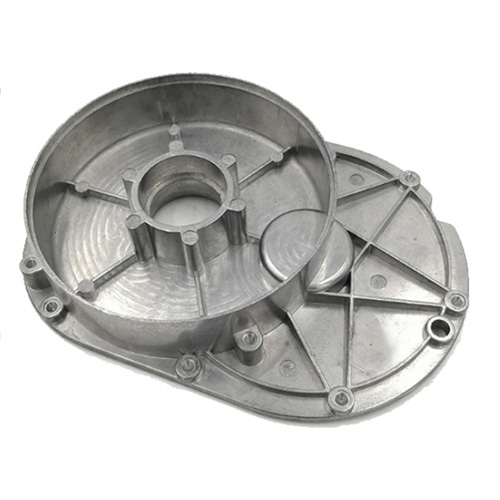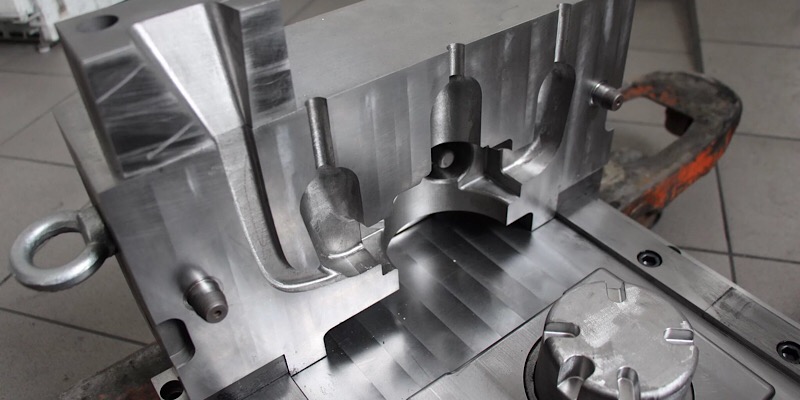The Best Guide To Alcast Company
The Best Guide To Alcast Company
Blog Article
Things about Alcast Company
Table of ContentsEverything about Alcast CompanyThe Only Guide to Alcast CompanyThings about Alcast CompanyThe Buzz on Alcast CompanyAlcast Company for Beginners7 Simple Techniques For Alcast Company
The refined distinction exists in the chemical content. Chemical Comparison of Cast Light weight aluminum Alloys Silicon promotes castability by reducing the alloy's melting temperature level and improving fluidness throughout casting. It plays a critical function in allowing detailed mold and mildews to be filled precisely. In addition, silicon adds to the alloy's stamina and put on resistance, making it useful in applications where longevity is vital, such as vehicle parts and engine parts.It also boosts the machinability of the alloy, making it easier to process right into finished products. In this means, iron adds to the overall workability of light weight aluminum alloys.
Manganese adds to the strength of aluminum alloys and improves workability (aluminum foundry). It is commonly utilized in functioned light weight aluminum items like sheets, extrusions, and accounts. The existence of manganese aids in the alloy's formability and resistance to splitting during fabrication processes. Magnesium is a light-weight aspect that offers toughness and effect resistance to light weight aluminum alloys.
Unknown Facts About Alcast Company
Zinc enhances the castability of light weight aluminum alloys and aids control the solidification procedure during spreading. It boosts the alloy's strength and solidity.

The primary thermal conductivity, tensile toughness, yield stamina, and elongation differ. Select ideal basic materials according to the efficiency of the target product generated. Amongst the above alloys, A356 has the highest possible thermal conductivity, and A380 and ADC12 have the most affordable. The tensile limit is the opposite. A360 has the best return stamina and the greatest prolongation rate.
What Does Alcast Company Do?

In precision spreading, 6063 is appropriate for applications where complex geometries and high-quality surface coatings are extremely important. Examples include telecommunication enclosures, where the alloy's superior formability permits streamlined and cosmetically pleasing layouts while preserving structural stability. In a similar way, in the Lights Solutions industry, precision-cast 6063 parts produce elegant and effective lights fixtures that need detailed shapes and great thermal efficiency.
It brings about a better surface area coating and far better rust resistance in A360. In addition, the A360 exhibits remarkable elongation, making it suitable for complicated and thin-walled elements. In precision casting applications, A360 is well-suited for markets such as Customer Electronic Devices, Telecommunication, and Power Devices. Its boosted fluidness allows for complex, high-precision elements like smartphone cases and communication gadget real estates.
Get This Report about Alcast Company
Its special buildings make A360 an important option for accuracy casting in these markets, boosting item longevity and quality. Light weight aluminum alloy 380, or A380, is an extensively used spreading alloy with several distinctive qualities. It uses superb castability, making it an ideal choice for precision spreading. A380 displays great fluidness when molten, making sure detailed and comprehensive mold and mildews are precisely recreated.
In precision spreading, light weight aluminum 413 shines in the Customer Electronics and Power Tools markets. It's commonly utilized to craft intricate components like mobile phone real estates, video camera bodies, click to read more and power device housings. Its precision is impressive, with limited resistances up to 0.01 mm, ensuring remarkable item assembly. This alloy's premium corrosion resistance makes it an outstanding option for outside applications, making certain lasting, sturdy products in the discussed sectors.
Fascination About Alcast Company
The light weight aluminum alloy you select will considerably impact both the casting process and the buildings of the last product. Because of this, you must make your choice meticulously and take an educated strategy.
Identifying the most suitable light weight aluminum alloy for your application will suggest evaluating a broad array of characteristics. These relative alloy qualities adhere to the North American Die Casting Association's guidelines, and we have actually separated them into 2 classifications. The initial classification addresses alloy attributes that influence the manufacturing process. The 2nd covers features influencing the properties of the end product.
7 Easy Facts About Alcast Company Described
The alloy you select for die casting straight influences several facets of the spreading procedure, like how very easy the alloy is to collaborate with and if it is vulnerable to casting issues. Warm splitting, likewise understood as solidification splitting, is a regular die spreading defect for light weight aluminum alloys that can result in internal or surface-level rips or splits.
Specific light weight aluminum alloys are more susceptible to warm breaking than others, and your choice needs to consider this. It can harm both the cast and the die, so you ought to look for alloys with high anti-soldering residential or commercial properties.
Deterioration resistance, which is currently a remarkable feature of light weight aluminum, can differ considerably from alloy to alloy and is an essential particular to take into consideration relying on the ecological conditions your product will certainly be exposed to (aluminum foundry). Put on resistance is another building typically sought in aluminum items and can set apart some alloys
Report this page